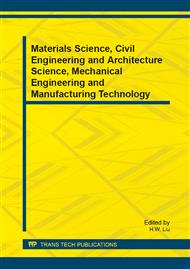p.417
p.421
p.424
p.429
p.433
p.437
p.441
p.445
p.449
Analysis on Analogue Simulation for Oscillatory Compaction Implementation in Bridge Deck Pavement
Abstract:
According to the compaction mechanism of oscillatory roller, a simulation model for oscillatory compaction implementation in bridge deck pavement was constructed via ANSYS. Contrast analysis on dynamic responses to bridge structure when vibratory roller or oscillatory roller is in operation shows that dynamic response of oscillatory roller is much smaller than that of vibratory roller under approximate compaction degrees. In this way, disturbance for the bridge structure can be reduced greatly, risk of bridge deck pavement construction can be decreased, and service life of the bridge can be increased effectively.
Info:
Periodical:
Pages:
433-436
Citation:
Online since:
January 2014
Authors:
Price:
Сopyright:
© 2014 Trans Tech Publications Ltd. All Rights Reserved
Share:
Citation:


